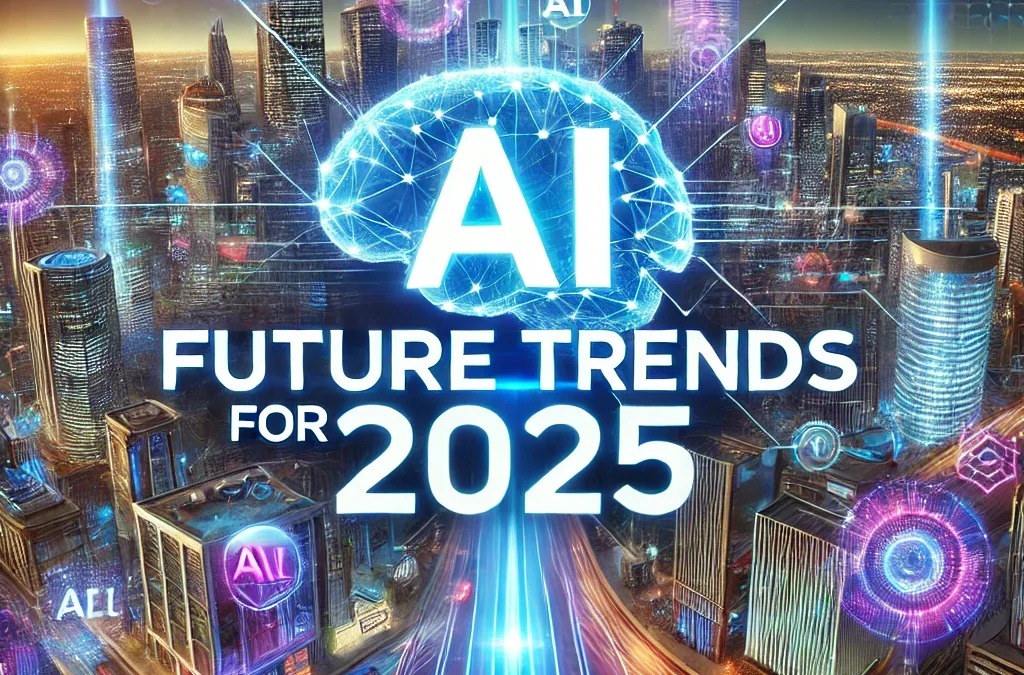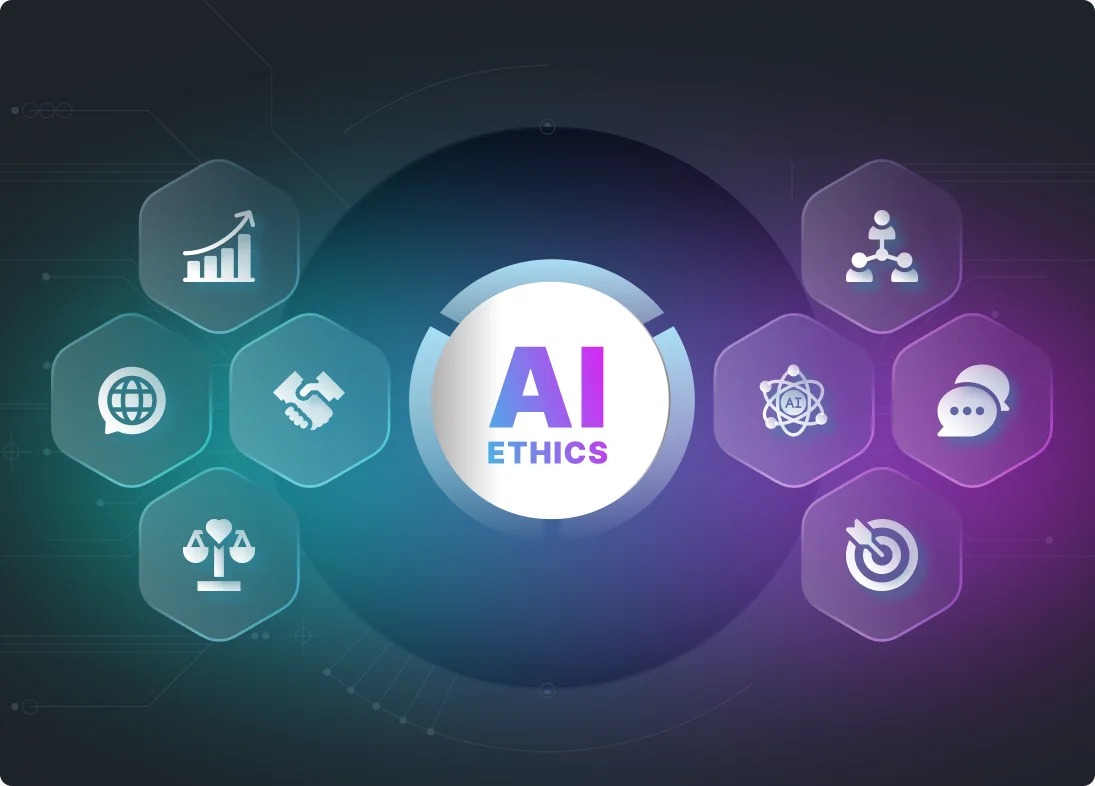
The Rise of Generative AI in 2025: Beyond Chatbots and Images.
By 2025, generative AI has transcended chatbots and image creation, becoming a powerful force across industries, from healthcare and education to entertainment and business. With autonomous agents, multimodal capabilities, and AI-driven creativity, this technology is reshaping innovation, productivity, and human collaboration, unlocking new possibilities for problem-solving, personalized experiences, and the future of human-AI partnership.
✨ Raghav Jain

Introduction: The New Dawn of AI Creativity
Just a few years ago, Generative Artificial Intelligence (AI) was seen primarily as a novelty—chatbots that could hold conversations, or image generators that turned text prompts into art. Fast-forward to 2025, and the landscape looks entirely different. Generative AI is no longer confined to entertainment or content creation; it has become a cornerstone of digital transformation across multiple industries.
From AI-driven scientific research to dynamic product design, personalized learning, and even autonomous software development, generative AI has crossed the threshold into becoming a co-creator rather than just a computational assistant. The line between human creativity and machine-generated intelligence is blurring faster than ever before.
The Journey So Far: From ChatGPT to Industry-Grade AI Systems
When OpenAI introduced ChatGPT and other similar large language models (LLMs) in the early 2020s, they demonstrated the potential of conversational AI. These systems could understand human-like language, generate content, and even assist in coding or customer support. Simultaneously, image-generation tools like DALL·E and Midjourney redefined the art and design industry, creating photorealistic visuals from simple prompts.
However, by 2025, generative AI has grown far beyond this early experimentation. Major advancements in multimodal AI—systems that can understand and generate across text, image, video, and audio—have expanded the possibilities dramatically. These models are no longer isolated tools; they are interconnected systems capable of reasoning, simulating, and innovating in real-time.
Key Technological Breakthroughs Driving Generative AI in 2025
1. Multimodal Fusion
Modern AI models can now seamlessly merge different data types—language, vision, and sound—to create unified outputs. For instance, an AI can now generate a short film from a text script, compose background music, and even provide post-production suggestions automatically.
This capability has opened the door to AI filmmaking, automated marketing campaigns, and personalized entertainment, where every user can experience customized storylines, visuals, and emotions.
2. Autonomous Generative Agents
In 2025, generative AI systems can act as independent “agents” capable of completing multi-step goals. These agents can manage complex tasks—like designing a product prototype, testing it in simulated environments, gathering user feedback, and revising it—all without direct human supervision.
Such agents have found use in industries like engineering design, game development, finance, and biotechnology, where they dramatically cut research time and cost.
3. AI-Generated Code and Software Development
Coding assistants have evolved into autonomous software engineers. AI tools can now write, debug, and optimize entire codebases with minimal human guidance. They understand legacy code, integrate APIs, and ensure cybersecurity compliance. This has led to the emergence of AI DevOps, where development and operations are largely AI-driven, allowing startups and large corporations alike to innovate at an unprecedented pace.
4. Personalized AI Companions
Generative AI has also entered the realm of personalized companionship and mental wellness. Unlike early chatbots, these new systems are emotionally adaptive, capable of learning users’ behavioral patterns, preferences, and moods. They act as life coaches, educators, and mental health aides, helping people learn, reflect, and grow through genuine conversation and emotional intelligence.
5. AI in Scientific Discovery
One of the most remarkable leaps of 2025 is the application of generative AI in scientific research. Systems like DeepMind’s successors and open-science AI platforms are now capable of generating hypotheses, running simulations, and even designing new materials or drugs from scratch. AI-driven protein modeling and molecular synthesis have accelerated medical breakthroughs that might have taken decades using traditional research methods.
Generative AI Beyond Art and Text: Industry Transformations
1. Healthcare
AI-generated medical imaging and synthetic data are enabling faster diagnostics while maintaining patient privacy. Hospitals now employ generative AI to simulate rare diseases for medical training, design personalized treatment plans, and even predict health outcomes from genetic profiles.
In mental health, AI companions are revolutionizing therapy accessibility by providing 24/7 emotional support and cognitive behavioral tools.
2. Education
The classroom of 2025 looks nothing like it did five years ago. Generative AI creates personalized learning paths for each student, adapting to learning styles and knowledge gaps in real time. It can generate interactive lessons, simulations, and even virtual tutors that teach in multiple languages and tones, ensuring inclusive education for all.
Teachers use AI to automate grading, design lesson plans, and identify students needing extra help. This has shifted educators’ roles from content delivery to mentorship and emotional support.
3. Entertainment and Media
From AI-composed music to automatically generated film scripts and entire video games, the creative industry has undergone a digital renaissance. Companies like Runway, Synthesia, and new entrants have made it possible to produce professional-grade movies, advertisements, and animations without traditional film crews.
Viewers can now interact with AI-generated virtual characters who evolve based on audience feedback—blurring the line between storytelling and reality.
4. Business and Marketing
In 2025, generative AI tools have become essential to marketing automation. AI models analyze real-time consumer behavior, generate brand-specific visuals, compose ad copy, and even predict campaign success rates. Businesses use AI to create customized messages that resonate with individual users across platforms.
Generative AI also powers synthetic data generation, allowing companies to test business models or machine learning systems without compromising user privacy.
5. Architecture and Manufacturing
Generative AI has made “design thinking” exponentially faster. Architects use AI to auto-generate thousands of structure designs optimized for materials, cost, and sustainability. Manufacturers use generative AI for supply chain optimization, predicting disruptions, and even designing next-generation products.
For instance, AI-designed materials—from lightweight alloys to smart textiles—are now being used in aerospace, automotive, and renewable energy industries.
Ethical Challenges and the Road Ahead
While generative AI has delivered extraordinary innovation, it has also raised serious ethical, legal, and social questions.
1. Misinformation and Deepfakes
With AI-generated content becoming indistinguishable from real media, the risk of deepfakes, fake news, and synthetic identity manipulation has grown. Governments and tech companies are now investing heavily in AI watermarking and content authenticity frameworks to counter misinformation.
2. Intellectual Property and Creativity
Who owns an AI-generated painting, song, or novel—the machine, the developer, or the user who provided the prompt? Copyright laws are struggling to keep up with the pace of AI creativity. In 2025, several international legal bodies are still drafting frameworks to define AI authorship and content ownership.
3. Job Displacement and Reskilling
Generative AI’s automation potential is both an opportunity and a threat. Millions of repetitive jobs are being replaced, but new opportunities are emerging in AI engineering, prompt design, model fine-tuning, and ethical auditing. Governments and organizations are focusing on large-scale reskilling programs to prepare the workforce for this AI-augmented economy.
4. Privacy and Data Use
Generative AI thrives on data—but at what cost? Stricter global data protection laws now require transparency in how AI systems are trained and how user data is used. The shift toward federated learning and privacy-preserving AI is helping maintain ethical standards without compromising innovation.
The Human-AI Collaboration Era
2025 marks the emergence of symbiotic creativity—a partnership between human imagination and machine intelligence. Instead of replacing human thought, AI amplifies it. Artists, scientists, and entrepreneurs are now using generative AI as a creative partner, not a competitor.
This collaboration is transforming what it means to create, learn, and innovate. The greatest breakthroughs are now coming not from machines alone but from humans working alongside generative systems—a blend of intuition, emotion, and algorithmic precision.
The year 2025 marks a transformative era for generative artificial intelligence, a technology that has evolved far beyond the early days of chatbots and image generators to become a multi-dimensional creative force reshaping nearly every sector of human endeavor, where once these systems were primarily curiosities capable of producing conversational text or turning simple prompts into visually striking images, now they serve as autonomous agents capable of executing complex tasks, integrating multimodal inputs including text, visuals, audio, and even video, and collaborating with humans to produce outcomes that were previously unimaginable, fundamentally altering the way we approach creativity, productivity, and problem-solving, as the technology has matured through advances in large language models, diffusion models, and neural networks that can learn contextual, semantic, and emotional nuances across domains, leading to a scenario in which AI can compose music that adapts dynamically to a listener’s mood, generate personalized educational curricula that account for a student’s learning pace, create photorealistic art and animations without human intervention, and even assist in scientific discovery by simulating complex molecular interactions or proposing novel hypotheses in fields like drug development and materials science, and this capability is not confined to a single industry, but has rapidly expanded to healthcare, where generative AI helps predict patient outcomes, design individualized treatment plans, and generate synthetic datasets for training models while preserving patient privacy, education, where AI-driven tutors now provide real-time feedback, personalized lesson plans, and interactive simulations that enhance comprehension and engagement across diverse learning styles, entertainment, where filmmakers, game designers, and content creators use AI to produce entire storylines, character models, and immersive experiences that respond to audience input, marketing, where companies deploy AI to craft hyper-personalized campaigns, visuals, and messages, and architecture and manufacturing, where AI designs and tests prototypes optimized for cost, sustainability, and structural integrity, dramatically shortening design cycles and increasing efficiency, and beyond these, AI has become an indispensable collaborator in the workplace, augmenting human intelligence rather than replacing it, functioning as an ideation partner, an analytical assistant, and a co-creator capable of exploring creative solutions that combine machine precision with human intuition, while simultaneously raising significant ethical and societal considerations, as the proliferation of deepfakes, AI-generated misinformation, and synthetic identities challenges our notions of authenticity and trust, intellectual property frameworks struggle to define ownership for AI-generated content, workforce displacement due to automation necessitates widespread reskilling initiatives, and concerns over data privacy and bias call for robust governance, transparency, and regulatory frameworks to ensure responsible usage, yet despite these challenges, the rise of generative AI in 2025 illustrates a profound shift from tool-based applications to integrated, autonomous systems capable of amplifying human potential, redefining the boundaries between human and machine creativity, and opening a future where imagination is no longer constrained by physical or cognitive limitations, as the collaborative synergy between humans and AI leads to accelerated innovation in scientific research, personalized learning, artistic expression, business strategy, healthcare, and technological development, creating new opportunities and industries while fostering an era of symbiotic coexistence where human insight and AI’s computational and generative capacities combine to address some of the world’s most complex problems, generate unprecedented cultural and scientific value, and fundamentally alter the way we live, work, and perceive intelligence itself, ultimately positioning generative AI not merely as a set of tools for communication or art, but as a pervasive, adaptive, and transformative technology that integrates into our social, economic, and intellectual ecosystems, signaling a paradigm shift in the 21st century that challenges traditional boundaries between creation, cognition, and computation, demonstrating that the future of human creativity and technological innovation is inseparably intertwined with the capabilities of generative AI, where the role of humans evolves toward mentorship, strategic oversight, and ethical guidance, while AI undertakes the heavy computational, creative, and analytical lifting, illustrating a vision where machines augment, enhance, and expand human potential in ways that were once thought impossible, heralding an era in which generative AI is not simply a complement to human activity but a fundamental partner in shaping the next wave of global innovation, discovery, and expression.
The rise of generative artificial intelligence in 2025 represents one of the most significant technological transformations of the 21st century, moving far beyond the early iterations of chatbots and image-generation tools to establish itself as a foundational technology capable of revolutionizing industries, human creativity, scientific research, and even the way we perceive intelligence, where in the past AI was often limited to performing narrow, task-specific functions such as answering customer queries, recognizing images, or assisting in basic text generation, today’s generative AI systems are highly sophisticated, multimodal, and autonomous, capable of integrating inputs across text, images, audio, and video, reasoning contextually, generating novel outputs, and executing complex, multi-step objectives with minimal human intervention, thereby transforming themselves from mere tools into collaborative partners that augment human creativity and productivity, and this transformation is driven by a combination of advances in large language models, diffusion models, neural networks, reinforcement learning, and multimodal architectures that allow machines to understand context, nuance, and intention across a wide spectrum of applications, enabling AI to create original works of art, compose music tailored to individual listeners’ emotional states, develop immersive virtual environments, write detailed scientific reports, design innovative products, and even simulate experiments that were previously impossible or prohibitively expensive, with the result that industries ranging from healthcare, education, entertainment, business, architecture, and scientific research are experiencing a paradigm shift in how they operate, as healthcare professionals leverage generative AI to predict disease progression, personalize treatment plans based on genetic and environmental data, and generate synthetic datasets to train predictive models without compromising patient privacy, while in education, AI-driven personalized learning platforms create dynamic curricula that adapt to the pace, style, and cognitive preferences of each student, providing real-time feedback, interactive simulations, and even emotionally intelligent virtual tutors that can foster engagement and understanding far beyond what a traditional classroom can achieve, and in the entertainment and media industries, generative AI has ushered in a renaissance in content creation, allowing filmmakers, game developers, and writers to generate entire storylines, characters, dialogues, music, and visual effects automatically or semi-autonomously, creating interactive experiences that respond to audience input in real time and enabling personalized entertainment experiences that were previously unimaginable, similarly, businesses now employ AI to craft highly targeted marketing campaigns, generate ad copy, design product prototypes, simulate consumer responses, and optimize supply chains with unprecedented efficiency, while architects and engineers use generative AI to model thousands of building or product designs that are optimized for sustainability, cost-effectiveness, structural integrity, and user experience, rapidly accelerating the iterative design process and enabling innovation at a speed that was previously unattainable, yet these technological advances come with significant ethical, social, and legal considerations, as the widespread generation of synthetic media raises concerns around deepfakes, misinformation, and content authenticity, while the question of intellectual property ownership becomes increasingly complex when AI produces creative works, leading to debates over whether the human prompt creator, the AI developer, or the AI system itself should hold copyright, alongside concerns about job displacement, as AI systems automate tasks across creative, administrative, technical, and analytical domains, necessitating large-scale reskilling and upskilling programs to ensure that workers can transition into emerging roles in AI oversight, prompt engineering, ethical auditing, and human-AI collaboration, additionally, privacy and bias challenges emerge as generative AI relies heavily on vast amounts of data to train its models, making transparency, fairness, and ethical governance critical for responsible deployment, and yet despite these challenges, the trajectory of generative AI in 2025 illustrates a profound opportunity for symbiotic collaboration between humans and machines, where AI does not replace human intelligence but enhances it, amplifying creativity, accelerating problem-solving, and expanding the boundaries of what is possible in research, industry, art, and education, as humans provide strategic guidance, ethical oversight, emotional intelligence, and imaginative vision, while AI contributes computational power, pattern recognition, and the ability to explore vast solution spaces quickly and efficiently, thereby redefining the concept of creativity itself as a joint human-AI endeavor rather than a purely human activity, and as generative AI continues to evolve, we see the emergence of autonomous AI agents capable of performing complex, multi-domain tasks such as writing software, designing experiments, generating content, and even interacting with other AI agents to accomplish collective goals, highlighting a future in which machines can function as collaborators, assistants, and co-creators rather than mere tools, ultimately signaling a new era where innovation, discovery, and creation are driven by the dynamic interplay of human ingenuity and AI-generated intelligence, positioning generative AI not only as a catalyst for efficiency and productivity but also as a transformative force that expands human potential, enabling personalized, scalable, and adaptable solutions to some of the world’s most complex problems, while simultaneously challenging society to thoughtfully address the ethical, legal, and social implications of widespread AI integration, and in this way, the rise of generative AI in 2025 exemplifies a pivotal shift in the technological landscape, moving humanity toward a future in which AI and human intelligence coalesce to create unprecedented possibilities for learning, creativity, problem-solving, and societal advancement, illustrating that the next stage of human progress is not about machines replacing humans, but about humans and machines collaborating to transcend the limitations of either individually, ultimately redefining what it means to create, to learn, and to innovate in a world where imagination and computation are increasingly intertwined.
Conclusion
Generative AI in 2025 represents one of humanity’s most profound technological evolutions. It has outgrown its early roles in chatbots and image generation to become a universal creative engine—a force driving progress in healthcare, science, business, and art.
While the ethical and societal implications remain complex, the trajectory is clear: the future belongs to those who embrace human-AI collaboration. Generative AI is not replacing human creativity—it’s extending it. The coming years will redefine what innovation means, as humans and machines co-create the next era of knowledge and imagination.
Q&A Section
Q1: What is Generative AI?
Ans: Generative AI refers to artificial intelligence systems capable of creating new content—such as text, images, music, code, and designs—by learning from large datasets. Unlike traditional AI, which only analyzes data, generative AI can produce entirely new, original outputs.
Q2: How has Generative AI evolved in 2025?
Ans: By 2025, Generative AI has expanded beyond chatbots and image creation to include autonomous agents, multimodal systems, scientific discovery tools, and emotional AI companions. It’s now used across industries like healthcare, education, entertainment, and architecture.
Q3: What industries are most impacted by Generative AI?
Ans: The most impacted sectors include healthcare, education, media, marketing, and product design. Each uses generative AI to automate creation, improve personalization, and accelerate innovation.
Q4: What are the ethical challenges of Generative AI?
Ans: The main challenges involve misinformation (deepfakes), copyright ambiguity, job displacement, and data privacy. Addressing these requires robust regulation, AI transparency, and responsible usage.
Q5: Will Generative AI replace human creativity?
Ans: No, Generative AI is not replacing human creativity—it’s enhancing it. The future lies in collaboration, where AI assists humans in ideation, execution, and problem-solving, creating outcomes neither could achieve alone.
Similar Articles
Find more relatable content in similar Articles

Microbiome computing: sensors ..
Microbiome computing represent.. Read More

Modular phones/devices: repair..
Modular phones and devices are.. Read More

Ethics of AI companions / emot..
As AI companions and emotional.. Read More

The Rise of Generative AI in 2..
By 2025, generative AI has tra.. Read More
Explore Other Categories
Explore many different categories of articles ranging from Gadgets to Security
Smart Devices, Gear & Innovations
Discover in-depth reviews, hands-on experiences, and expert insights on the newest gadgets—from smartphones to smartwatches, headphones, wearables, and everything in between. Stay ahead with the latest in tech gear
Apps That Power Your World
Explore essential mobile and desktop applications across all platforms. From productivity boosters to creative tools, we cover updates, recommendations, and how-tos to make your digital life easier and more efficient.
Tomorrow's Technology, Today's Insights
Dive into the world of emerging technologies, AI breakthroughs, space tech, robotics, and innovations shaping the future. Stay informed on what's next in the evolution of science and technology.
Protecting You in a Digital Age
Learn how to secure your data, protect your privacy, and understand the latest in online threats. We break down complex cybersecurity topics into practical advice for everyday users and professionals alike.
© 2025 Copyrights by rTechnology. All Rights Reserved.